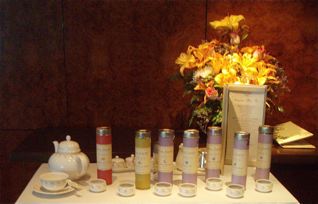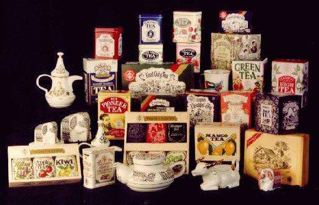
Are you a tea drinker?
As of the year 2010, the Tea Association of the USA estimated that there are at least 154 million people in the US who drink some form of tea.
If their 2010 Tea Fact Sheet still holds true, then in effect before the year ends approximately 1 out of every 2 persons in the US will have consumed some form of tea this year.
(Image of Christmas Tree + ornaments courtesy of dyet at rgbstock.com)
In Part 1 of this 3 part series we’ll review a little background on tea and tea events, and mention some potential health benefits from its flavonoid content.
In Part 2 of this 3 part series we’ll discuss how to potentially obtain the most flavonoid content by how you steep your tea and some information about caffeine and tea.
In Part 3 of 3 in this series we’ll mention about some other potential health benefits & concerns surrounding tea consumption. We’ll mention tea consumption’s possible impact on hydration level, how it may contribute to better oral and bone health, how it may help with more graceful aging, and even how it might play a role in helping someone to lose a little excess weight.
Tea consumption is a multi-billion dollar industry in the USA and the industry expects growth to remain strong in the years ahead.
Most of the US tea consumption is regional within the South and the Northeast, and the Tea Association of the USA estimates that 85% of all tea consumed in the USA is in the form of iced tea!
A more recent US trend (at least in the Northeast) is for tea rooms and upscale hotel restaurants to offer freshly brewed hot tea for “Afternoon Tea” or else “High Tea” featuring a tea theme to suit the time of year as mentioned in a previous blog post. Cruise ships have also adopted this approach as noted in a previous blog post.
 Typically after Thanksgiving, you’ll find a number of locations may feature a Christmas Tea event, often scheduled to start somewhere between 2-4 PM.
Typically after Thanksgiving, you’ll find a number of locations may feature a Christmas Tea event, often scheduled to start somewhere between 2-4 PM.
Such Tea events may feature a variety of teas, although often at Christmastime certain specific tea blends may be favored. Alcoholic preparations may be added to or served with some of these Christmas or Holiday Tea offerings, so be sure to inquire in advance if you are so inclined to make a reservation and before consuming anything at those events. (Note: we realize many people celebrate alternate holidays in the winter season and if you do not celebrate Christmas, then know we only mentioned it because in commerce the themed events will often use the term in their marketing & advertising efforts).
 Afternoon Tea (served traditionally between 2-5 PM) as well as High Tea (served traditionally between 5-7 PM) has a curious origin per an infographic on the subject.
Afternoon Tea (served traditionally between 2-5 PM) as well as High Tea (served traditionally between 5-7 PM) has a curious origin per an infographic on the subject.
It is reported that back in 1840, Anna, Duchess of Bedford, elevated “Afternoon Tea” to the realms of the uppercrust aristocracy by having a light snack with a cup of tea around 4 PM in the afternoon to reverse the “sinking feeling” she had before the wealthy would have a much later dinner.
Consuming tea later in the day as part of an evening meal reportedly has its roots in the UK when working class laborers finally got home after a hard day’s work and could finally relax with a cup of tea around 6 PM at night, dining around a high table. Over time the activity morphed into a pre-meal event called High Tea for the uppercrust aristocracy and featured a richer spread of food items.
Nowadays, many people are looking for some health benefits as well when brewing tea at home or enjoying it at an afternoon tea event somewhere.
NOTE: It is well known that Eastern Medicine practitioners have advocated the use of special tea blends for thousands of years as part of what we now call complementary and alternative medicine. We urge you to discuss any interest you might have in special tea blends sold through herbal shops with your own personal health care practitioner(s) who monitor your health status and prescribe any prescription (Rx) pharmacist-dispensed or suggest any over-the-counter (OTC) medications you might take. Substances found in various specialty tea preparations might have potential negative interactions with other medications (Rx or OTC) and/or with your overall health status. While visiting a pharmacy, a consumer can also take advantage of discussing what is in various pharmaceutical grade products sold there with the Registered Pharmacist on duty.
BTW, the NIH materials found at the Herbs at a Glance site remain nice resources on some herbs, including some that might be incorporated into various non-tea leaf “herbal teas” (which actually are tisanes, since they are not really “tea” per se). You can download an eBook as an ePub (for Nook, iPad and more; or for Kindle) as well as see individual herb pages on the NIH site as well.
There have been a number of rumors (some myth, some fact) circulating about brewed tea in recent years, so we thought it might be a good time to clear the air a bit. What we’ll share is only infotainment and garnered from various resources* including peer-reviewed publications, information from various professional associations, etc.
One of those rumors about tea is that all tea products are good sources of antioxidants such as flavonoids. Do you happen to know if that is myth or fact?
Heathful Flavonoid Content of Teas
 In a previous blog post we have mentioned the differences between the four top types of various teas coming from the tea plant, Camellia senesis, going in order from the least to the most processed: white; green; oolong; and black. Each of those major types of tea is categorized based upon whatever processing the tea leaves undergo, which may or may not include an oxidation step. Note that white and green teas are NOT oxidized and thus are more comparable (in both chemical composition and look) to the fresh tea leaf they originate from, while oolong tea is oxidized for 2-3 hours and black tea is oxidized for up to 4 hours.
In a previous blog post we have mentioned the differences between the four top types of various teas coming from the tea plant, Camellia senesis, going in order from the least to the most processed: white; green; oolong; and black. Each of those major types of tea is categorized based upon whatever processing the tea leaves undergo, which may or may not include an oxidation step. Note that white and green teas are NOT oxidized and thus are more comparable (in both chemical composition and look) to the fresh tea leaf they originate from, while oolong tea is oxidized for 2-3 hours and black tea is oxidized for up to 4 hours.
(image 177225 High Tea courtesy of picgifs.com)
The Tea Association of the USA estimates that 80% of the tea consumption in the USA is from black tea, 19.5% from green tea, and the remaining half of a percent represents consumption of either oolong and/or white tea per se.
Did you know that as a rule, according to information summarized by USDA, Ready-to-Drink Tea product beverages that come from green tea, black tea, or made from powder (could be a mixture of teas) contain between approximately only 1/10th – 1/5th of the total flavonoid content found in tea brewed from either loose form or in tea bags?!
Why does that matter? Flavonoids in both green and black tea have been shown to lower circulating blood levels of what is often called “bad cholesterol” or low density lipoprotein aka LDL cholesterol. Kim A, Chiu A, et al. Green tea catechins decrease total and low-density lipoprotein cholesterol: a systematic review and meta-analysis. J Am Diet Assoc, 2011 Nov; 111(11): 1720-9.
Back in 2006, researchers noted that females in a study experienced a lower risk of dying from the #1 killer of women, heart disease, when they consumed 5 “cups” of green tea/day. Kuriyama S, Shimazu T, Ohmori K, et al. Green tea consumption and mortality due to cardiovascular disease, cancer, and all causes in Japan: the Ohsaki study. JAMA. 2006; 296(10):1255–1265.
This year in 2012, other researchers noted that persons with either normal or upper end normal blood pressure (BP) could experience lowered BP readings with long-term consumption of black tea on a regular basis. Effects of Black Tea on Blood Pressure: A Randomized Controlled Trial. Arch Intern Med. 2012; 172(2): 186-188
Please note that just because researchers noted these observations, it does not mean that anyone who consumes x amounts of any of the aforementioned brewed teas would also experience those same results. One cannot necessarily make direct correlations from research to any one unique person’s life per se, but rather, you could discuss this information with your health care provider(s) to determine what recommendations your provider(s) might have and together you might find some of the information in this and other infotainment valuable in forming strategies to protect your’s and your family’s health status.
There are many valuable anti-oxidants available through a varied dietary intake such as a typical Mediterranean style diet or other dietary plan that reflects many of the key points in the 2010 Dietary Guidelines for Americans, and flavonoids are an important part of an anti-oxidant arsenal your body uses to more optimally function. As part of a balanced diet, steeping & consuming green +/or black tea could easily help to contribute to that anti-oxidant intake. Research is ongoing into the anti-oxidant role of theaflavins and phenolic acids (part of the polyphenols) content in teas.
Obviously you might be doing yourself a favor if you follow a back-to-basics approach and perhaps skip those Ready-to-Drink Tea product beverages in favor of having a cup of brewed hot tea!
Why not take the opportunity to learn more about the many varieties of tea? Whether sold loose or in bags, lots of brewable tea options are available right now. Some of those products will actually only be featured in a wider range of stores or tea shops/tea rooms or restaurants, etc., specifically for the holiday season.
Time to get out a real tea pot with a built-in strainer or else a large tea ball for brewing some flavorful tea this Fall & coming Winter!
Moderate consumption of tea holds promise for a host of potential health benefits for many individuals and not all are associated with any flavonoid content the tea might have.
In Part 2 of 3 of this blog series we’ll mention about some other potential health benefits & concerns surrounding tea consumption. Let’s talk a little bit about whether it is better to brew tea in bags or just loose, how long to brew black tea, and typical tea caffeine content and its potential health effects.
In Part 3 of 3 of this blog series we’ll delve into the role tea intake might play in helping to stay hydrated especially during the winter months, a role tea might have in better oral and bone health, if tea possibly is linked to graceful aging, and if tea might have a role in weight management. There are other potential areas of discussion, but for this infotainment blog series we’ll limit our discussion to just that list.
Remember that this site only offers infotainment and you are always urged to contact your own health care provider to discuss options when it comes to your unique personal health status and how your personal dietary choices may impact your health.
Enjoy the holidays and hopefully enjoy a cup of tea as well!
Do you have a favorite type of black or green tea and a favorite purveyor you use? Feel free to share your suggestions with family, friends, and if you wish, with us here as well.
*In developing this 3 part blog series, we would like to particularly acknowledge access to information available through the Tea Association of the USA, including their 2010 Tea Fact Sheet as well as TEA AND HEALTH (An Overview of Research on the Potential Health Benefits of Tea) developed by Maggie Moon, MS, RD of Pollock Communications for that tea association; and through Tea Time: The Health Benefits of Tea (Online Learning Module SKU 6500) of Food & Nutrition Magazine, the Academy of Nutrition and Dietetics, developed by Victoria Shanta Retelny, RD, LDN and Neva Cochran MS, RD, LD as an adjunct Continuing Professional Education (CPE) module to the Summer 2012 (Volume 1, Issue 2) of Food & Nutrition Magazine Tea Time feature story authored by Joanna Pruess and Neva Cochran MS, RD, LD; as well as the National Headache Foundation Clinical Update: Caffeine and Headache module.

